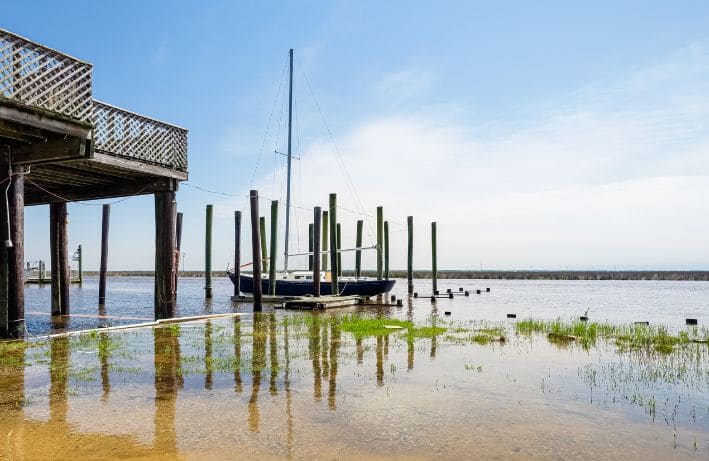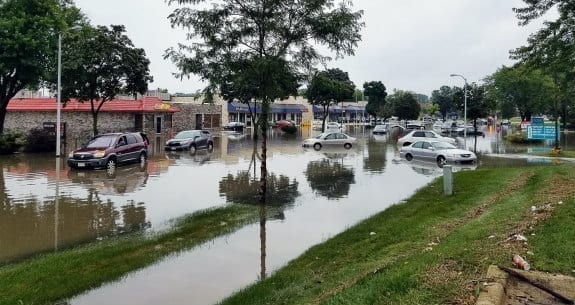Nearly $2 Billion Available in BRIC, FMA Funding for FY23

FEMA is making $1.8 billion available for two grant programs designed to help communities increase their resilience to the impacts of climate change, including increasingly frequent and extreme weather events.
The Building Resilient Infrastructure and Communities (BRIC) annual grant program is making $1 billion available for projects that protect people and infrastructure from natural hazards and the effects of climate change. The Flood Mitigation Assistance (FMA) program is making $800 million available for projects that mitigate flood risks facing homes and communities across the nation.
The application period for FY23 opens on Oct. 16, 2023 and are available on Grants.gov. Eligible applicants must apply for funding using FEMA Grants Outcomes, FEMA’s grants management system. Applications must be submitted in the portal no later than 3 p.m. ET on Feb. 29, 2024. The application deadlines are for applicants only. Local governments should consult with their state, tribal or territorial agency to confirm deadlines to submit subapplications.
View Notice of Funding Opportunity
Continued Efforts to Ensure Equitable Access to Funding
As part of the Biden Administration’s Justice40 Initiative, the BRIC and FMA programs aim to deliver 40% of their overall benefits to disadvantaged communities that are marginalized, overburdened by pollution, and underserved. FEMA exceeded this goal in its most recent year of funding, delivering 53% of benefits from FY22 BRIC and FMA awards to Justice40 communities.
There will also be additional financial and technical support to help overburdened and underserved communities build resilience. For instance:
- Using money from the Bipartisan Infrastructure Law, FEMA is providing up to 90% federal cost share for FMA in disadvantaged communities, relative to a standard cost share of 75%.
- Designated Community Disaster Resilience Zones (CDRZs) are eligible for up to 90% federal cost share for BRIC, relative to a standard cost share of 75%.
Completing a Benefit-Cost Analysis may be a hurdle for some communities when applying for grants. FEMA has established streamlined cost-effectiveness determination methods for some hazard mitigation projects and project types to facilitate the application process while still ensuring all selected projects are cost effective.
- Local governments may instead provide a narrative for projects under $1 million that demonstrates the benefits and cost-effectiveness of the project. FEMA will help calculate the Benefit-Cost Analysis for these communities.
- FEMA reduced the discount rate it has pre-calculated benefits available online on many projects to aid in the application process.
- FEMA continues to not require a Benefit-Cost Analysis as a condition to apply for an Economically Disadvantaged Rural Community, federally recognized tribal government, or a subapplicant with a hazard mitigation project within or primarily benefiting a Community Disaster Resilience Zone. FEMA will review the hazard mitigation project subapplications that eligible for selection and may assist such communities with developing a benefit-cost analysis.
FEMA is further expanding BRIC Direct Technical Assistance with a goal to add at least 80 more communities and tribes to the current 74 local jurisdictions nationwide. Direct Technical Assistance helps communities in need identify mitigation needs and develop tools to successfully apply for resilience funding through holistic hazard mitigation planning and project support.
Communities interested in submitting a request for assistance may do so from Oct. 16, 2023 – Feb. 29, 2024. FEMA published a new form online to streamline and simplify the submission process.
More Detail on FY23 Funding Opportunities
As in years past, FY23 Flood Mitigation Assistance (FMA) grants will be targeted towards projects that reduce or eliminate the risk of repetitive flood damage to buildings insured by the National Flood Insurance Program.
FY23 BRIC grants will be awarded to advance several different resilience objectives:
Commitment to Nationwide Resilience: As part of the administration’s commitment to building nationwide resilience to the climate and natural hazards facing us today and those we anticipate in the future, BRIC sets aside grant funds set aside for U.S. states, tribes and territories.
- In FY23, all 50 states, the District of Columbia, and U.S. territories have been set-aside a maximum of $2 million each for a total of $112 million.
- FEMA has set-aside $50 million exclusively for federally recognized tribes in FY23. The combined cost of the applicant’s capability- and capacity building activities under this set-aside must not exceed $2 million.
National Competition: Each year, FEMA holds a national competition for large projects to enhance infrastructure resilience.
- Approximately $701 million is available through the FY23 national competition. FEMA will make selections based on the highest composite score. Selection criteria includes incentives for projects benefitting disadvantaged communities, incorporation of nature-based solutions and adoption of the latest building codes. Examples of these funded large projects from previous years are available on FEMA.gov.
Building Code Adoption and Enforcement: New this year, FEMA is setting aside additional funding dedicated to building codes activities that make structures more resilient to seismic activity as well as climate-fueled extreme weather.
- In FY23, all 50 states, the District of Columbia, and U.S. territories have been set aside a maximum of $2 million each specifically committed for building code activities. This funding is on top of the state and territorial “Commitment to Nationwide Resilience” funding outlined above.
- FEMA has set aside up to $25 million exclusively for federally recognized tribes in FY23 for building code activities. This funding is on top of the tribal “Commitment to Nationwide Resilience” funding outlined above.
Last year, nearly $3 billion was available through the two programs, with the FY22 selections funding 748 resilience projects across 55 states and territories as well as the District of Columbia. The funding for BRIC went down this year due to the way it is funded, which largely comes through setting aside 6% of FEMA assistance provided following major disaster declarations. Now that all COVID-19 disaster declaration incident periods have officially ended, there’s less available funding for BRIC. However, the $1 billion available for FY23 is double what it was in the program’s first year of funding when $500 million was available. BRIC also receives $200 million/year five years from the Bipartisan Infrastructure Law.
FEMA has planned three live webinars for governments to learn more about preparing applications. Subjects will include technical and qualitative criteria, application pitfalls and repetitive loss properties. Dates TBD.
Visit FEMA.gov for more information about Hazard Mitigation Assistance.


